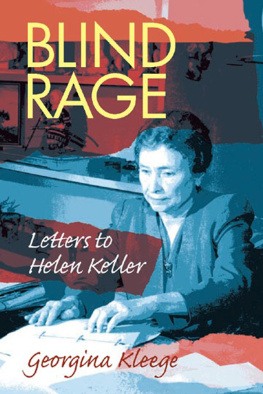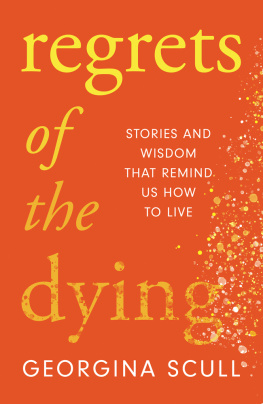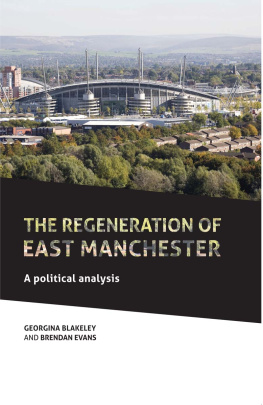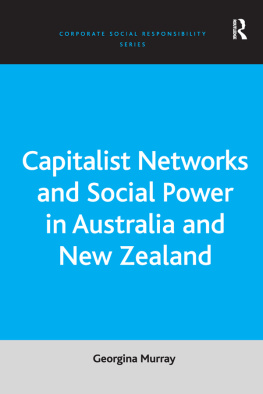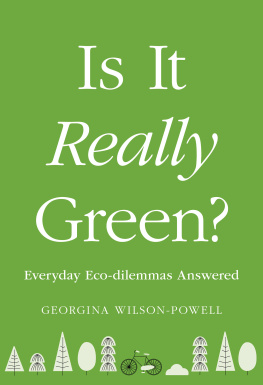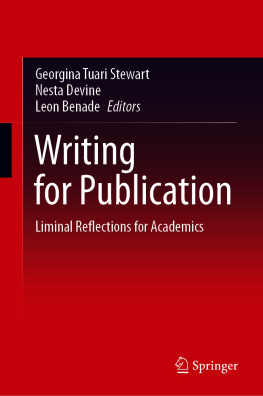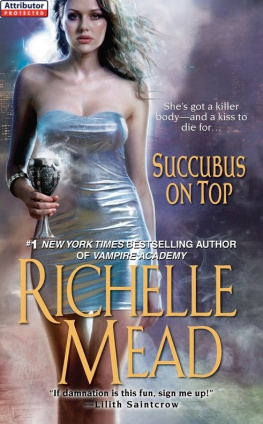Georgina Kleege - More than Meets the Eye
Here you can read online Georgina Kleege - More than Meets the Eye full text of the book (entire story) in english for free. Download pdf and epub, get meaning, cover and reviews about this ebook. year: 2017, publisher: Oxford University Press, genre: Art. Description of the work, (preface) as well as reviews are available. Best literature library LitArk.com created for fans of good reading and offers a wide selection of genres:
Romance novel
Science fiction
Adventure
Detective
Science
History
Home and family
Prose
Art
Politics
Computer
Non-fiction
Religion
Business
Children
Humor
Choose a favorite category and find really read worthwhile books. Enjoy immersion in the world of imagination, feel the emotions of the characters or learn something new for yourself, make an fascinating discovery.
- Book:More than Meets the Eye
- Author:
- Publisher:Oxford University Press
- Genre:
- Year:2017
- Rating:4 / 5
- Favourites:Add to favourites
- Your mark:
- 80
- 1
- 2
- 3
- 4
- 5
More than Meets the Eye: summary, description and annotation
We offer to read an annotation, description, summary or preface (depends on what the author of the book "More than Meets the Eye" wrote himself). If you haven't found the necessary information about the book — write in the comments, we will try to find it.
More than Meets the Eye — read online for free the complete book (whole text) full work
Below is the text of the book, divided by pages. System saving the place of the last page read, allows you to conveniently read the book "More than Meets the Eye" online for free, without having to search again every time where you left off. Put a bookmark, and you can go to the page where you finished reading at any time.
Font size:
Interval:
Bookmark:


Oxford University Press is a department of the University of Oxford. It furthers the Universitys objective of excellence in research, scholarship, and education by publishing worldwide. Oxford is a registered trade mark of Oxford University Press in the UK and certain other countries.
Published in the United States of America by Oxford University Press
198 Madison Avenue, New York, NY 10016, United States of America.
Oxford University Press 2018
All rights reserved. No part of this publication may be reproduced, stored in a retrieval system, or transmitted, in any form or by any means, without the prior permission in writing of Oxford University Press, or as expressly permitted by law, by license, or under terms agreed with the appropriate reproduction rights organization. Inquiries concerning reproduction outside the scope of the above should be sent to the Rights Department, Oxford University Press, at the address above.
You must not circulate this work in any other form and you must impose this same condition on any acquirer.
CIP data is on file at the Library of Congress
ISBN 9780190604363 (pbk.)
ISBN 9780190604356 (hbk.)
ISBN 9780190604387 (epub)
For Arien
The blindness in this story isnt a metaphor.
ANNE FINGER, THE BLIND MARKSMAN
Portions of this book have appeared in Disability Studies Quarterly, Journal of Literary and Cultural Disability Studies, Representations, Social Research, and The Journal of Visual Culture. I am grateful to all the editors for their support of this project.
In 2002, Fiona Candlin and Caro Howell invited me to speak at a symposium called Challenging Occularcentricity in Museum Practice, at the Tate Modern in London, which set this project in motion. I am also grateful to Martin Jay for inviting me to the Show and Tell conference at Berkeley in 2004, where my investigation of the Hypothetical Blind Man began. Katherine Sherwood and Elizabeth Dungan curated the Blind at the Museum exhibit in 2005, which introduced me to several of the artists featured in the book. The Blind Creations conference at Royal Holloway, University of London in 2015, organized by Hannah Thompson and Vanessa Warren introduced me to several others. I am also thankful to David Feeney and Daniel Thornton for inviting me to participate in a panel called More Than Meets the Eye at the Edinburgh International Film festival in 2013, which gave the book its title.
Time and again I have turned to artists Suzanne Lacke and Katherine Sherwood to describe images, explain painting and drawing techniques, and generally share their knowledge and expertise.
Gabriella Wyatt helped select images and obtain the permissions to reproduce them.
I am indebted to the following people for their advice, suggestions, friendship, and description of images, without which this book would not have happened: Elizabeth Abel, Patrick Anderson, Devon Bella, Brenda Jo Brueggemann, Anastasia Howe Bukowski, Will Butler, Amanda Cachia, Catherine Cole, Michael Davidson, Piet Devos, Nadia Ellis, Anne Finger, Lakshmi Fjord, Maria Flamich, Ann Fox, Rosemarie Garland-Thomson, Florian Grond, Gili Hammer, Leon Hilton, Rita Hoffman, Catherine J, Kudlick, Petra Kuppers, Nina Levent, Victoria Lewis, Heather Love, Victoria Marks, Darrin Martin, Josh Miele, Mara Mills, Karen Nakamura, Corbett OToole, Joan Muyskens Pursley, Babette Schmidt, Susan M. Schweik, C. Namwali Serpell, Jennifer Sutton, Scott Wallin, Zina Weygand.
At Oxford University Press I am grateful to Brendan ONeill for his faith in this project and to Sarah Pirovitz for her ongoing support. Abigail Johnson has been endlessly helpful. India Gray has been a vigilant copyeditor and Rajakumari Ganessin has managed the many phases of the production with efficiency and grace.
I have tried to describe all the images in the body of the text, while the captions simply provide the titles, artist, and the necessary copyright information. I hope that this will be less intrusive for people who read aurally and tactually.
The topic for this book came to me almost by accident. In 2002, I was invited to speak at a symposium at the Tate Modern in London, on the topic of access to the visual arts for people who are blind and visually impaired. The symposium organizers had read my book, Sight Unseen, where I describe, among other things, growing up as the legally blind daughter of two visual artists. Due to this family background, and the personal inclination that grew out of it, I have always spent a lot of time in art museums. I have been known to travel some distances to attend exhibits of favorite artists and would generally classify myself as an art lover. At the time, however, I had never looked into access programs because I was accustomed to providing my own access, in the person(s) of friends and family members who went with me to look at art. Typically, they would read me the labels and enhance whatever impressions my impaired perceptions allowed me to form through their opinions and insights. I knew that with the passage of antidiscrimination legislation like the Americans with Disabilities Act, art museums, like other public institutions, were tasked with making their facilities and collections accessible to people with disabilities. I had observed the addition of ramps and automatic doors to many museums I visited at home and abroad but had never really thought much about what access to visual art would mean for blind people.
When I began to research access programming that was already in place at institutions around the world, I was at first heartened by what I discovered. There was a lot going on. With a little effort or advance warning, it was possible to find some sort of program nearly everywhere. But as I looked deeper, what I discovered was somewhat disturbing. The vast majority of these programs seemed aimed at one of two overlapping groups. The first target audience was blind children. I have no problem with this. In fact, with the general decline of arts education in the public schools, it seems admirable and desirable that museums should take over this task, for the benefit of both blind and sighted children. But the other target audience was a bit at odds with reality. Programs seemed aimed at totally and congenitally blind adults who not only had no prior experience of art or art history but also little or no knowledge of visual terminology. This seemed to me to defy logic and demographics, when one considers that the vast majority of blind and visually impaired people in the industrialized world are adults who were formerly sighted. Furthermore, it seemed logical that the average blind adult likely to seek out these services, born that way or not, would have some prior knowledge of visual art, art history, and visual terms and concepts. This then was my starting point. Is there a way to provide access to the visual arts for blind people that does not demean those who are supposed to benefit?
When I tell people that Im working on a book about blindness and visual art, I have come to expect a particular response. To put the words blindness and visual art in the same sentence may seem like the punchline to a tasteless joke or part of a simile denoting futility, as in, that makes about as much sense as a blind person in an art museum. In my defense, Id point out that Im not the first person to pair blindness with visual art. Indeed, the history of speculation on visual art, and human vision in general, is haunted by ideas about blindness. For example, Denis Diderots essay, Notes on Painting (1765) begins with a description of a blind woman. Of all the many subjects and styles of painting he could use to launch his discussion, why choose an image of blindness? Since then, when theorists imagine a spectrum of human visual experience they place the blind man at one end, standing for the complete absence of vision. The other endpoint is occupied not by a person with merely average vision, but by the artist, someone understood to possess extra special vision. The artist is depicted as a sort of superman of seeing, able to see more or better than ordinary people, and to show, not just what he sees but also how best to look at it. Consider this example where the critic, Leo Steinberg imagines a dialogue about art between a blind man and Jasper Johns:
Font size:
Interval:
Bookmark:
Similar books «More than Meets the Eye»
Look at similar books to More than Meets the Eye. We have selected literature similar in name and meaning in the hope of providing readers with more options to find new, interesting, not yet read works.
Discussion, reviews of the book More than Meets the Eye and just readers' own opinions. Leave your comments, write what you think about the work, its meaning or the main characters. Specify what exactly you liked and what you didn't like, and why you think so.


